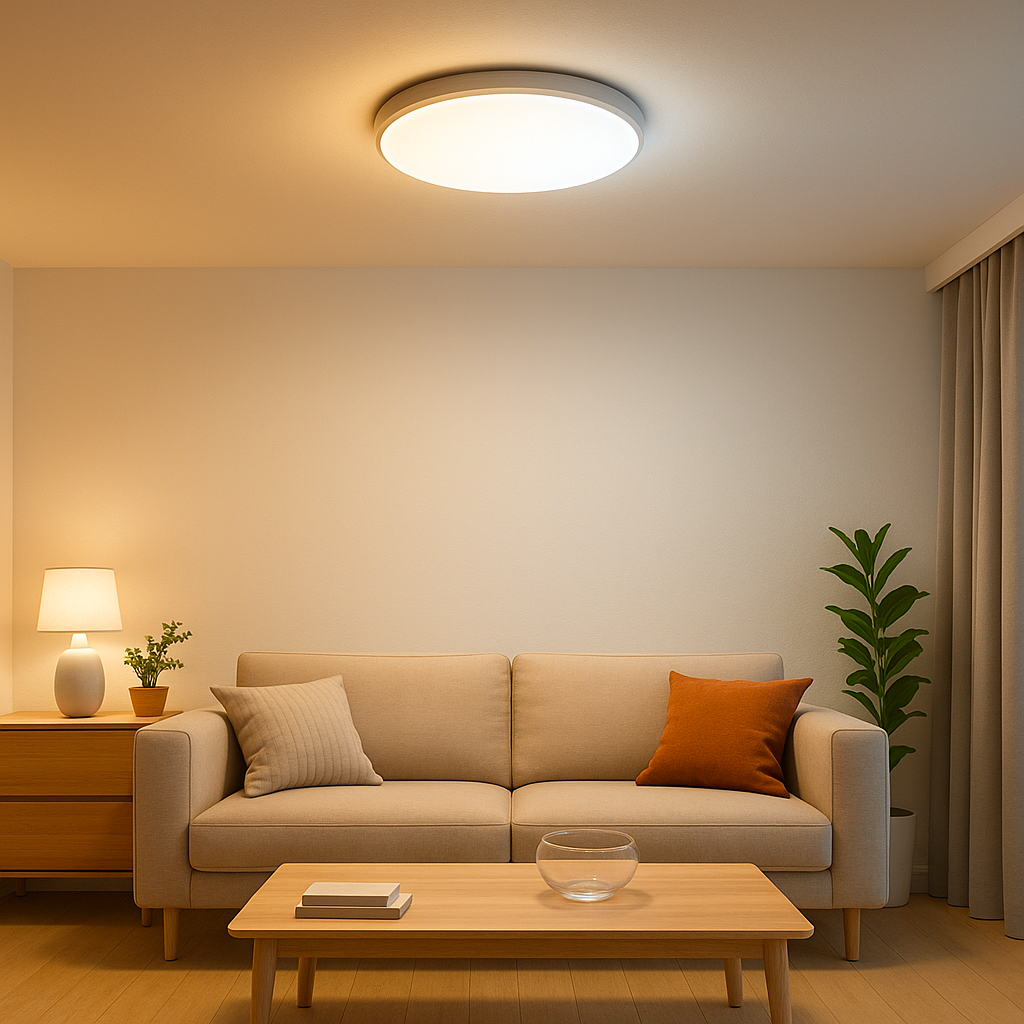Lighting plays a huge role in shaping the atmosphere of any room. Beyond simple illumination, the right light can make a space feel cozy, vibrant, or focused, depending on your needs. Among the many options available today, ceiling lights remain one of the most practical and versatile choices for both homes and commercial spaces. But with so many styles, wattages, and features to pick from, how do you find the one that fits your room best?
This guide will walk you through the key considerations when selecting an LED ceiling light, from room size and function to color temperature, energy efficiency, and design.
1. Match Wattage and Quantity to Room Size
The first factor to consider is the size of your space. Larger rooms naturally need more brightness, either from higher-wattage ceiling lights or by installing multiple fixtures. For instance, a small bedroom may only need a compact 12W ceiling light, while a spacious living room could require 30W or more to ensure even lighting across the area.
2. Choose Color Temperature Based on Function
Color Temperature & CRI: Key to Atmosphere and Comfort
When choosing a ceiling light, color temperature and Color Rendering Index (CRI) are two specs that often get overlooked, yet they play a huge role in how a space feels and functions. They determine not only brightness, but also the mood, comfort, and even how accurately colors appear.
Recommended Color Temperatures
-
Workspaces / Study: 4000–5000K (neutral to cool white) — crisp, clean light that helps boost focus and productivity.
-
Kitchen / Bathroom: 3500–5000K — cooler tones are better for task areas, ensuring clear visibility and safer operation.
-
Living Room / Bedroom: 2700–3000K (warm white) — soft, cozy light that encourages relaxation and winding down.
-
Entertainment Room / Kids’ Room: RGB or RGBCW lights — flexible color-changing options that switch from everyday white light to playful effects.
Color Rendering Index (CRI)
CRI measures how accurately a light source reveals colors:
-
For general home use, CRI ≥ 80 is sufficient.
-
For areas where color accuracy matters (like a vanity, kitchen, or display zone), aim for CRI ≥ 90, so tones look natural and true-to-life.
Dimming & Color Adjustment
Many modern LED ceiling lights now come with dimming or tunable color features:
-
Dimming allows you to adjust brightness to suit the moment — full brightness for daytime work, dimmed light for evening relaxation.
-
Tunable white or RGBCW lets you shift anywhere from warm 2700K to cool 6500K, and in some cases, switch to full RGB mode for vibrant effects. This makes a single fixture versatile enough for working, studying, entertaining, or simply unwinding.
In short, pairing the right color temperature with a good CRI rating — and adding dimming or color control — can dramatically improve not just the look of a room, but also the overall comfort and quality of everyday living.
3. Style and Design
Ceiling lights are not just functional; they’re part of your décor. Slim, minimalistic designs are perfect for modern interiors, while larger, statement fixtures can become a focal point in the room. Pay attention to shape (round, square, ultra-thin) and finish to ensure the fixture complements your interior style.
4. Energy Efficiency and Lifespan
One of the biggest advantages of LED ceiling lights is their efficiency compared to traditional bulbs. A 24W LED ceiling light can produce as much brightness as a 150W incandescent bulb, cutting energy use by more than 80%.
LEDs also have an exceptionally long lifespan, often rated at 30,000–50,000 hours. To put that in perspective, even if you use the light for 8 hours a day, it could last more than 10 years before needing replacement. This not only saves money on replacements but also reduces maintenance hassle.
Additionally, most quality LED ceiling lights feature good thermal management—heat dissipation designs that protect the chips and extend lifespan. When shopping, check product details for rated lifespan, lumen output, and efficiency (lumens per watt). These numbers give you a clear picture of both cost savings and long-term performance.
5. Smart Features and Adjustability
More ceiling lights now come with dimmable options, adjustable color temperature, or smart home integration. For example, some fixtures can shift from warm to cool light depending on the time of day, while others sync with Alexa or Google Home for voice control. These features add flexibility and help you create different moods without needing multiple fixtures.
6. Choosing Ceiling Lights for Different Spaces
When selecting ceiling lights, it’s easier to find the right model if you consider how it will fit into your actual living space. Different room sizes and functions require different types of lighting:
-
Small bedrooms or hallways: A 7-inch round LED ceiling light (12W, multiple color temperatures available) provides soft illumination that feels comfortable without making the space seem cramped.
-
Kitchens or medium-sized bedrooms: A 12-inch round LED ceiling light (24W) offers even brightness, suitable for both daily lighting and creating a cozy atmosphere.
-
Living rooms or larger spaces: A 15.7-inch round LED ceiling light (32W) delivers wide light coverage and uniform brightness, making it ideal for open-plan living areas.
-
Home theaters or multifunctional rooms: A Smart RGBCW ceiling light supports tunable white light from 2700K–6500K and RGB colors, and is compatible with Alexa and Google Home, allowing you to switch ambiance effortlessly.
Final Thoughts
By matching the size of the space, lighting needs, and your lifestyle habits, you can choose fixtures that not only brighten your home but also enhance everyday comfort and ambiance.

